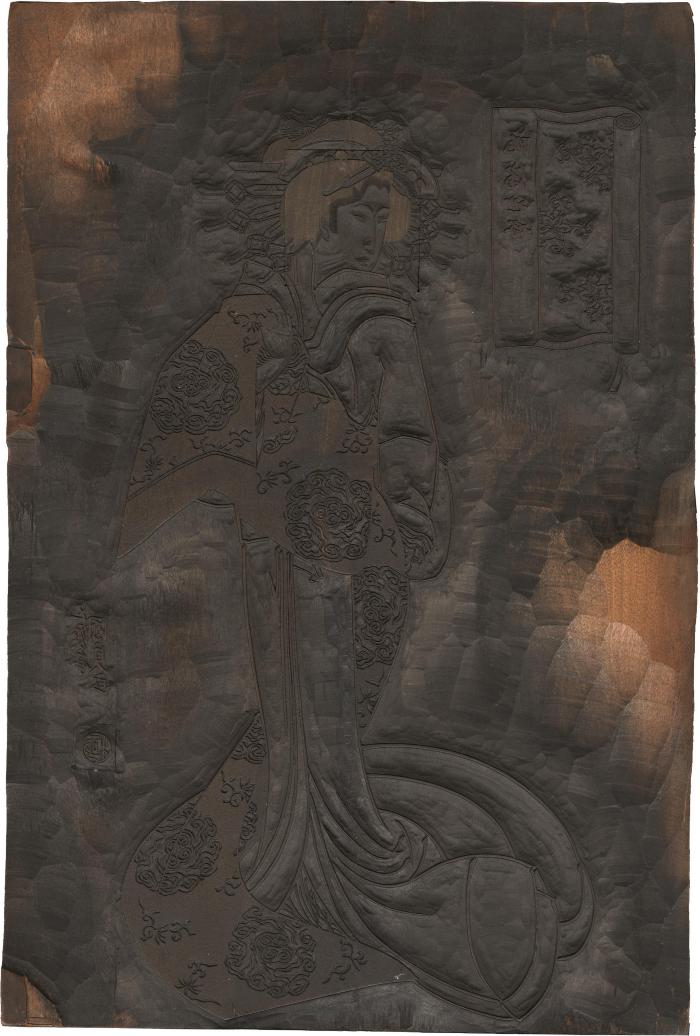Utagawa Kunisada (歌川国貞) / Toyokuni III (三代豊国) (artist 1786 – 01/12/1865)
Keyblock for Fabric Pattern Series - two sides with contemporary proof for a print from the series 'Custom-made for today's tastes - heavy brocade cloth (御誂当世好 - 厚板)
ca 1820
carved woodblock
Signed in reverse: Gototei Kunisada ga
Censor seal - also in reverse: kiwame
Ritsumeikan University - in black and white
Museum für angewandte Kunst, Vienna To fully appreciate the significance of this particular keyblock, you should click on the image to enlarge it because that way you will be able to studied more closely how the area of the courtesan's head has been replaced by a different block of wood. This could have been for a number of reasons:
- the old block might have worn down through printing and thus the fine lines of the hair and face might have been lost; or
- if this is an image of an actor in a female role, but a new actor had been brought in then a new block portraying the face needed to be cut; or
- if the hairstyle had changed since the original block had been carved.
The term for a keyblock is shuhan (主版). The term for a replacement block is an 'ireki' (入れ木).
The other side of the block contains several areas for color printing, one of them has been printed on the keyblock proof (see additional images). This color printing side of the block has two sets of kento (registration notches) so that the pale color of the face can be printed, then the block rotated 180 degrees and the cartouche and/or hair overlay may be printed at different times from the same block.
The keyblock figure is almost identical to the MAK color print except for the noted
See the color print image from the MAK collection reproduced here. The curatorial files at the Museum für angewandte Kunst in Vienna say of their finished copy of this image.
They date their copy to ca. 1810, but this seems too early to us. However, their curatorial comments seem spot-on:
"Series with courtesans in kimonos made from the latest fabrics. In the top left corner there is a pattern of a fabric. The fabric has a blue check pattern with large flowers and tendrils on it. The poem is by the famous gesaku 戯作 writer Shikitei Samba 式亭三馬 (1776-1822). The picture shows a high-ranking courtesan tying her obi (belt)."
